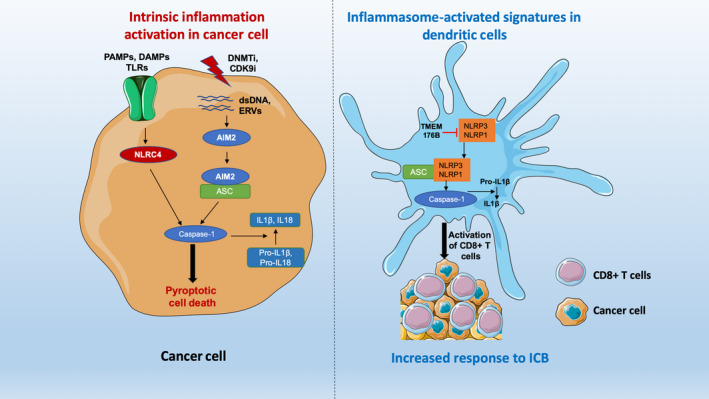Figure 1.

Possible mechanisms of pyroptotic cell death through inflammasome activation. Epigenetic drugs such as DNA methyltransferase inhibitor (DNMTi) and CDK9 inhibitors (CDK9i) can activate ERVs and dsDNA in the cancer cells. Inflammatory protein AIM2 binds dsDNA and subsequently activates caspase‐1 through forming a complex with ASC protein. Whereas, DAMPs, PAMPs binds to TLRs on the plasma membrane and subsequently activate inflammatory sensor NLRC4, which can directly activate caspase‐1. Activated caspase‐1 directs pyroptotic cell death and converts IL‐1β, IL18 from inactive Pro‐IL‐1β, Pro‐IL18 that releases from the cells to drive inflammation (left panel). Intrinsic inflammatory gene signatures in the dendritic cells or macrophages augment response to ICB. TMEM176B is a negative regulator of the inflammatory proteins such as NLRP3 and NLRP1. Blocking TMEM176B by small molecule inhibitor leads to activation of caspase‐1 and IL‐1β. This promotes the recruitment of CD8+ T cells in the tumor microenvironment thus enhancing the therapeutic response of ICB (right panel) (modified from Segovia et al., 2019). DAMPs, damage‐associated molecular patterns; ERVs, endogenous retroviruses; ICB, immune checkpoint blockade; PAMPs, pathogen‐associated molecular patterns; TLR, toll‐like receptor.
